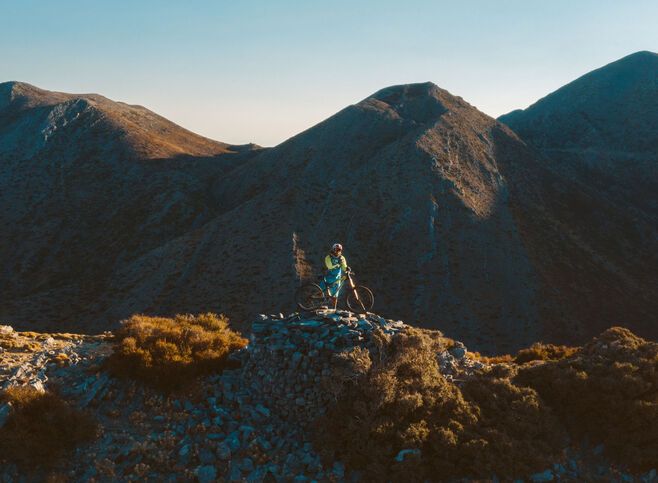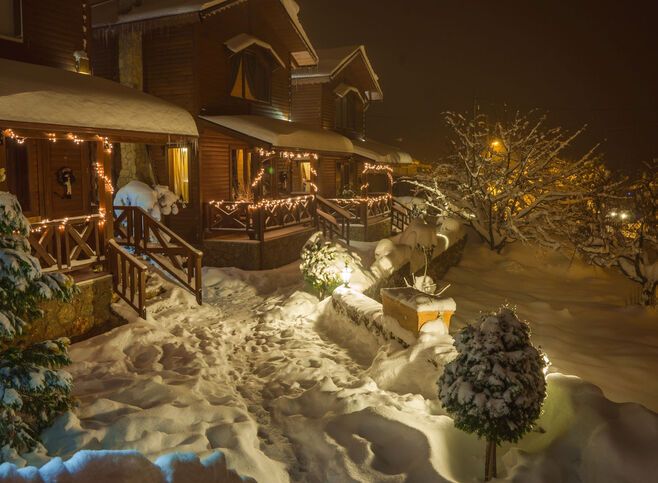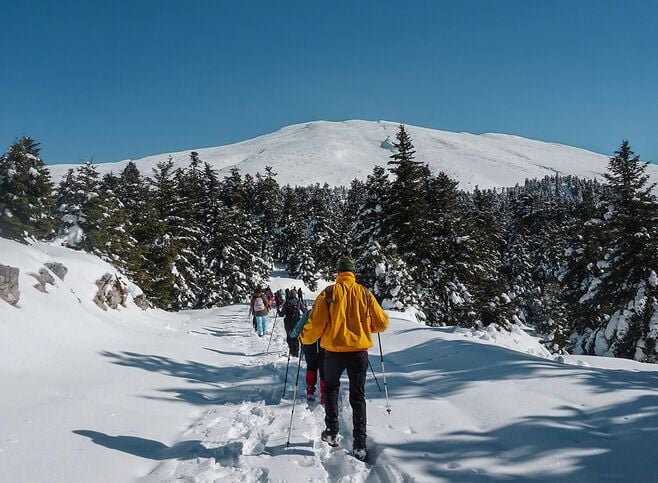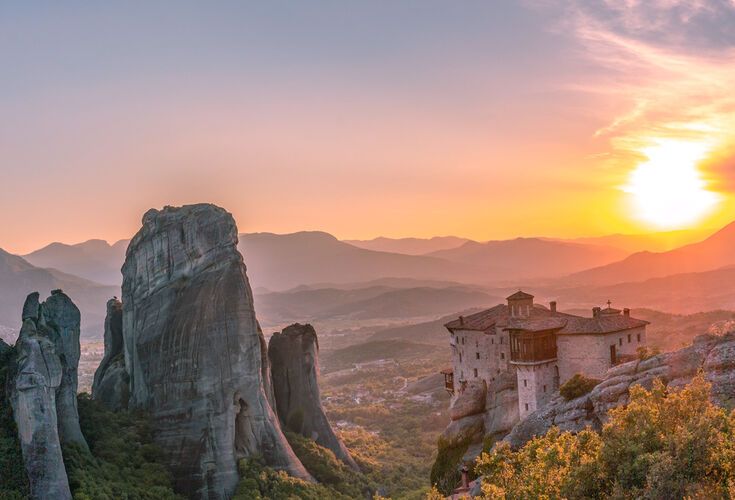- Places to go
- Things to do
- Book your trip
- Get Inspired
- More
- BACK
-
-
A miracle of both man and nature, Lake Plastira is one of the biggest artificial lakes in Greece and, framed by the fir-tree peaks of the Agrafa mountains, one of the most beautiful. You’ll enjoy biking around the lake, kayaking, rock climbing and hiking, horseback riding and 4x4 adventures, providing the very best of the region of Thessaly. Taste authentic local flavours and wines, relax in cosy stone guesthouses with views of the lake and explore old monasteries and historic villages. Lake Plastira is not just a winter destination. There are plenty of reasons to visit, any season of the year.
A Greek general, later prime minister, Nicholas Plastiras, had the idea in 1928. Years later, the dam and the lake became a reality and he became its ‘godfather’. Although modesty never permitted him to say so, the lake was his gift to future generations… blue water, beaches and fir trees, with people enjoying the landscape in every possible way.
The road around the lake’s perimeter is a montage of beautiful images. Along the route (70km), you’ll enjoy all the most important sights of the area. You can divide it into sections and see it in two or three days. Begin at Kalivia Pezoulas, near the centre of the lake. From here, you can reach two of the loveliest villages in this corner of Greece, Neraida and Filakti.
Lake Plastira is the perfect location for mountain sports and all sorts of outdoor activities, such as biking, horseback riding, canoeing, water bicycling, paragliding and sailplaning. You can also try skiing at the small resort of Karamanoli or crossing the impressive ‘Grand Stream’ canyon. Bring your own equipment or rent from the many adventure companies in the area. Onwards and upwards!
Carved into the steep vertical rock, the Monastery of Panagia Pelekiti is one of the most impressive attractions in the area. It has two churches, Analipseos and Panagias, both built in 1640. Petras Monastery is even older (1553) and its altar resembles those of the monasteries of Mt Athos. Korona (‘Crown’) Monastery will remind you of a castle and from its high vantage point, you’ll admire the glorious surroundings. Its murals were painted in 1587 and its altar, with its ornate wooden iconostasis, dates back to the 16th century.
Romantic hideaways and villas or rooms to rent, fully equipped to accommodate families and groups of friends, await you in villages such as Kalyvia Pezoulas, Kastania, Kryoneri, Lambero, Belokomitis and especially Neohori. You’ll find beautiful stone guesthouses with all modern comforts, fireplaces, lake views, cafes and restaurants.
Enjoy grilled and stewed meat, trout cooked over charcoal and other traditional dishes, complemented by Messenikolas wine (a fine vintage). The stone tavernas at Kalyvia Pezoulas, Belokomitis and Neohori, in the region of Tsardaki, are famous for their good food and hospitable atmosphere. In the morning and afternoon, you’ll enjoy a leisurely coffee while basking in the sun next to the lake.
Messenikolas is one of three villages that cultivate the red-grape variety Black Messenikolas. There are wineries in the area that you can visit and, at the Wine and Vineyard Museum, you’ll learn everything there is to learn about local production.
On the western side of the lake, near Neohori, there is a beautiful botanical garden. Over an area of 10 hectares, it offers a compelling journey not only around this particular ecosystem but also the flora of Greece as a whole.
It’s worth taking a stroll in the lake’s nearby villages: Fylakti, with its lovely town square, is perfect in the summer, and Lambero, Kryoneri (with its pretty Ai-Giorgis chapel) and Kastania await nestled amongst the firs.


















